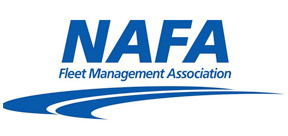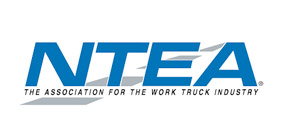Keeping the public in the know during storm events
 Kürt Blomquist | Guest columnist
Kürt Blomquist | Guest columnist
Public Works Director/Emergency Management Director,
Keene, N.H.
Your bank sends you notıces over your phone, your teenage children live on social media and even the president of the United States tweets. If you are sitting at your desk thinking that social media has no relationship to your snow and ice control activities or your public works department in general, here are some statistics to ponder.
From We Are Social’s — wearesocial.com — 2016 Digital Yearbook, the global population was 7.395 billion; there are 3.419 billion internet users, 2.307 billion active social media users, 3.790 billion unique mobile phone users and 1.968 billion active mobile social users. In an Oct. 8, 2015, the Pew Research Center issued a report by Andrew Perrin called “Social Media Usage: 2005–2015,” which reviewed the use of social media. It reported that 65 percent of American adults use social network sites; 90 percent of adults 18-29 are most likely to use social media; 35 percent of adults over 65 are using social media; and 58 percent of rural residents, 68 percent of suburban and 64 percent of urban residents are using social media in one form or another.
If you are wondering about the ever present cell/smartphone — in an April 1, 2016, Pew Research Center report by Aaron Smith called “U.S. Smartphone Use in 2015” — it was reported that 64 percent of American adults own a smartphone of some type, a majority of smartphone users use their phones to look up information, and 40 percent of smartphone owners look up government services or information.
If these statistics have not gotten your attention on how information is being received along with the explosion of smartphones has been an exponential growth of “apps.” Today there is an app for everything, from online banking, shoe buying and weather to flying a drone. Just go to the Google Play Store and see what is available. This has created a culture that information is the norm. People want to know what is happening, where it is happening, how it will affect them and they want it when they want it. Private companies now cater to this demand. A person can bank 24 hours a day, seven days a week, or access the services of their favorite store at any time. Government is a service and our customers have the same expectations from us as they do for Amazon.
My department recognized that the traditional methods of communication were not being as effective as we wanted. In 2011 the Department developed a social media strategy and began with our Facebook page, facebook.com/keenepublicworks/. Several years later we integrated other platforms, including twitter, @KeenePWD; Instagram; and a YouTube channel — all with the purpose of getting our story out to our customers.
For our snow and ice control activities, we have been using it to keep the public informed on our activities. We push out information on our pre-storm activities, updates during the storm, post-storm plans, and fun facts and trivia. What is important is that this information is timely and relevant. This resulted in us pushing out the responsibility for updates to front line supervisory staff. For winter events the primary posters are the highway superintendent and department administrative staff. We have established general guidelines for the type of information and style of post. As director, I am not reviewing all posts because that would slow them down.
For pre-storm posting, we are telling people about any pre-treatment activities, updated weather information and how the department will be approaching the storm.
During the storm event, we are pushing out information on how activities are going. Since our operations can be done at night or when people are at home, it is important for them to know that you are out.
As storms are wrapping, we are putting out information on what can be expected over the next several days.
Another area that keeps people interest is fun facts and trivia about winter and being prepared. An important part of any social media strategy is keeping your fans engaged. So these posting let people know that you are still active and thinking about them.
We have found since the implementation of our social media communication strategy that there has been a decrease in calls to the department during storms. The communication and comments we do receive are more supportive of the department and its staff. In today’s world people want to feel like they are in the know, that they are informed on what is happening and that they are receiving the service they expect. There is some level of effort if you are not doing much today because the concept of social media is to be in the moment you can spread out the responsibility. If you have not looked at a social media communication strategy, you may want to start working on one.
Kürt Blomquist has been in involved in the public works profession for over 30 years. He serves as the public works director and emergency management director for the city of Keene, N.H. He is a licensed professional engineer and a graduate of Norwich University and Georgia Institute of Technology. He is active in the American Public Works Association; on the boards of the New England Chapter of APWA; New Hampshire Public Works Association; and the New Hampshire Public Works Mutual Aid Board. He serves as a faculty for the New England Public Works Institute through Norwich University.







